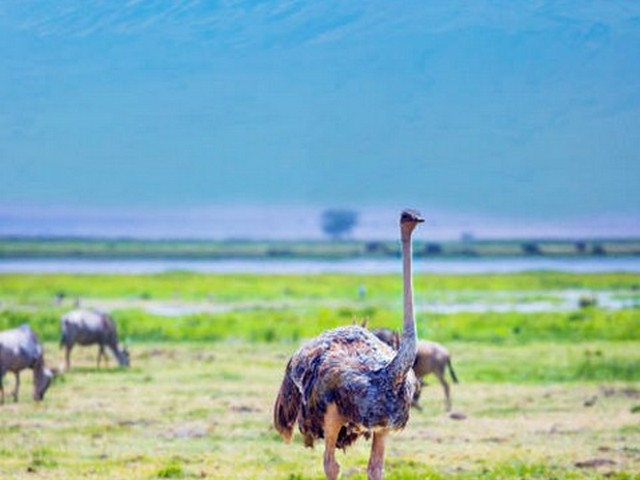Exploring Kilimanjaro's Unique Vegetation Zones with Kilimanjaro Centre for Trekking and Ecotourism (KCTE)
Welcome to a captivating journey up the majestic slopes of Mount Kilimanjaro, where the landscape transforms dramatically with every step you take. This magnificent mountain is not only the highest peak in Africa but also a fascinating ecological wonder. Here at Kilimanjaro Centre for Trekking and Ecotourism (KCTE), we are thrilled to guide you through the rich tapestry of Kilimanjaro's unique vegetation zones. Each zone offers a distinct experience and insight into the mountain's diverse ecosystem. Ready to embark on an unforgettable adventure?
The Footsteps of Giants: The Cultivated Zone
As you begin your ascent from the base of Mount Kilimanjaro, you'll find yourself in the lush, verdant area known as the Cultivated Zone. This region, stretching up to 1,800 meters, is teeming with life. Local communities have been farming this fertile land for centuries, growing coffee, bananas, and a variety of vegetables. The connection between the mountain and the people is palpable here, offering a unique cultural perspective to your trekking experience.
A Walk in the Clouds: The Rainforest Zone
Elevate from the cultivated landscapes and step into the mysterious and enchanting rainforest zone, which ranges from 1,800 to 2,800 meters. This dense, humid jungle is a stark contrast to the farmland below. Giant ferns and towering trees draped in moss are home to a chorus of wildlife, including the blue monkey and the elusive Kilimanjaro tree hyrax. The canopy overhead is alive with the sounds of chirping birds and rustling leaves, creating a serene yet exhilarating backdrop for your climb.
The Heath and Moorland: A Highland Vista
Ascending further, between 2,800 and 4,000 meters, the sprawling rainforest gives way to the open heath and moorland. This zone is marked by the dramatic appearance of giant heather, interspersed with grasses and wildflowers. The air here feels fresher, cooler, and the landscape opens up breathtaking panoramas of the plains below. The heath zone is not just a treat for the eyes; it's also a critical habitat for a variety of bird species, including the Malachite Sunbird and the Alpine Chat.
The Alpine Desert: The Moonlit Wilderness
From 4,000 meters to the final ascent, the terrain transforms yet again, this time into the stark and rugged alpine desert. Sparse vegetation, vast rocky expanses, and the sharp, crisp air define this zone. It is a place of profound silence and immense solitude, where every step brings you closer to the sky. The simplicity and challenge of this zone make it a favorite among climbers, offering unmatched purity and a sense of otherworldly adventure.
The Summit: The Ice-Capped Crown
Above 5,000 meters, the summit zone awaits, crowned with glaciers and snow. The vegetation here is minimal, limited to a few hardy lichens and mosses that can withstand the extreme cold. The sight of the massive ice fields against the backdrop of African skies is surreal and marks the pinnacle of the trekking experience on Kilimanjaro.
Why Choose Kilimanjaro Centre for Trekking and Ecotourism (KCTE)?
Embarking on a trek to explore Kilimanjaro's unique vegetation zones is not just about physical endurance; it's about immersing yourself in the natural beauty and understanding the ecological significance of this towering giant. At KCTE, we are committed to providing an enriching, safe, and sustainable trekking experience. Our expert guides are not only trained in high-altitude trekking but are also passionate about the conservation of Kilimanjaro's diverse ecosystems.
Booking your climb with KCTE means choosing a partner who values the mountain as much as you do. We ensure that our tours are conducted with the utmost respect for the local environment and communities. Moreover, our tours are designed to cater to various fitness levels and trekking experiences, ensuring everyone can enjoy the splendor of Kilimanjaro.
Frequently Asked Questions
What is the best time to climb Kilimanjaro?
The best times to climb Kilimanjaro are during the dry seasons, from June to October and from December to March, when the weather is most favorable.
How fit do I need to be to climb Kilimanjaro?
While you don't need to be an athlete, a reasonable level of fitness is required to successfully complete the trek. We recommend engaging in regular cardiovascular training and strength exercises in the months leading up to your climb.
What should I pack for the different vegetation zones?
Layering is key! The temperature varies significantly across the different zones. Essentials include moisture-wicking clothing, thermal layers for the cold, a waterproof jacket, and sturdy hiking boots. Don't forget a hat and sunscreen for protection against the sun.
How does KCTE promote sustainable tourism?
At KCTE, we adhere to Leave No Trace principles, limiting the impact of our tours on the environment. We also support local conservation efforts and employ local guides to ensure that the benefits of tourism are shared with the community.
Ready to Explore Kilimanjaro's Unique Vegetation Zones?
Join us at Kilimanjaro Centre for Trekking and Ecotourism (KCTE) for an adventure of a lifetime. Discover the incredible biodiversity and stunning landscapes of Africa's highest peak. Book your trek today and step into the vast beauty of Kilimanjaro's unique vegetation zones. Let's ascend together, respecting the mountain, embracing the challenge, and creating unforgettable memories. Book your climb now and let the adventure begin!




